Jim Lovgren: Walking with the Whales at Black Sands Beach, Shelter Cove, Ca.
Jim Lovgren 10/27/23
I was a commercial fisherman for over 45 years on the east coast and have seen hundreds of whales at sea, but there is nothing like seeing a large whale purposely swimming in the surf, while you’re standing thirty feet away. In Shelter Cove, a small fishing town of 700 residents in Northern California, Whales swimming in the surf, is a common occurrence during their spring and fall migrations and right now it is at its peak. My wife and I live just down the street from the famous Black Sands Beach where these Whales dare to get so close to shore and in the last 10 out of 12 days that we have looked we have observed the Whales in the surf.
Shelter Cove is remote and only assessable by one infamous road, but the drive is worth it, as most of the area is conservation land or wilderness. A small fleet of fishing boats operate out of there, but the port is limited to mostly smaller vessels, [less the 30 feet] since they must be pulled daily as anchorage is not safe. They’ve been struggling this year after the shutdown of the Salmon fishery and short Dungeness crab season, but the last couple weeks have seen 150 to 200 pound Bluefin Tuna brought home every day. They’re still there, within ten miles of the beach right now, check into a charter while you can. Along with the Tuna are migrating Humpback and Grey Whales whose spouts can be seen from the Cape Mendocino lighthouse park overlooking the Pacific Ocean, or a number of other parks along Pacific Drive. The real spot though is Black Sands Beach, at the northern most part of Shelter Cove, and the beginning of the famous Lost Coast Trail. Here those migrating Humpback and Grey Whales come to “scratch their backs” along the steep, rocky coast, in the surf. That surf is violent, as the shore drops precipitately just feet from the water line, and the waves are stood up as they hit the wall of the shore. The undertow is fierce, causing many warning signs placed along the pathway down to the beach including this; “Stay out of the ocean, not even your toes, Deadly and unexpected waves”. “Not even your toes”, that says it all about the conditions of the beach. Black Sands Beach is a misnomer, the “sand”, is actually surf rounded pebbles and smaller rocks one to four inches, with some larger ones mixed in. This rounding of the rocks enables dunes to shift size and locations along the beach rapidly, especially during storms, but what makes them dangerous is at the surf line, where they can suck in your feet and drag you in as they just slip under your flailing feet and the undertow grabs you. So don’t go near the water.
Yesterday my wife Cindy and I went down the road to the beach and pulled into the parking lot for Black Sands Beach and parked. Walking towards the northern overlook, that sits 200 hundred feet higher than the beach, I spotted a Whale as soon as I could see the beach, its two fins sticking out of the water like two sharks swimming in line, it was heading north. This unusual view of the Whales pectoral fin and one side of its tail happens when the Whale is swimming on its side, rubbing either its belly or back along the shoreline. We watched it as it turned offshore and around to the south. Having been observing local Whale’s behavior, we knew that it was going to stay around to get both sides scratched. We hurried down to the beach where we were able to get close enough to get some good video of the Whale. The Whale swam south towards us, in the surf, and about one hundred yards past the huge rock at the entrance to the beach, he did as I expected, and turned back around to the north. He then continued swimming to the north, in the surf, but about ten feet farther off then previously, soon leaving us tired out trying to keep up. We had enough exercise at that point and climbed back up the path to the parking lot. One last look north up the beach showed no sign of our friendly Whale, but
another Whale showed up in the surf, right in front of us. Ho-hum.
Today as I went down to take a picture of the beach for this article, sure enough a large whale was spouting about 400 feet north of me along the edge. I didn’t pursue it, but I believe this was a Gray whale, as it didn’t show much of its back when it spouted. The seemingly more common Humpback Whales generally expose a portion of its back when they surface to spout, and many times you can see the barnacles on their backs when they surface. Its these barnacles and the unique geologic
characteristics of Black Sands Beach that draw the Whales so close to the shoreline here. When they are in the surf, swimming, or just laying there hardly moving, they are letting mother nature scratch the barnacles off of them. Due to the sharp, steep shoreline, the Whales can rest safely along the ocean bank and their enormous body moves up and down with each swell, with the rocks of Black Sands Beach scrapping off their unwanted traveling companions.
I’m amazed by how many times I’ve seen people on the beach with a Whale right in front of them and they are unaware of it. They are not easy to spot, and even when you do, they might not come up again. You have to have patience, and good eyesight helps. Black Sands beach is huge, it stretches along the northern coast as far as the eye can see and is over five hundred feet wide along its southern stretch. Many times, you will be the only person on it. The best way to search for a whale in the surf at Black Sands beach, is to first view from one of the two parking lot areas, each has its own viewing areas. From up there you get a more aerial view of the shoreline. Concentrate your viewing on the shoreline directly in front of those parking lots, that is where they have been doing most of their back scratching. I’m not sure if time of day is important, because we usually go after 4 pm, but early risers report seeing them in the morning. High or low tide hasn’t mattered lately, but the height of the
surf definitely affects any Whale sightings. If the waves are higher than six feet you probably won’t spot a Whale, the surf is too dangerous. Search for bird play along the shoreline, [birds circling near the water surface], its an indication of fish, and hungry Whales. If you see bird play, concentrate your efforts there for a few minutes, looking for shadows in the water, or unusual turbulence in the water itself. The most common sighting is a spout, if you see one, wait for the second spout so you know which way the Whale is traveling. Once sighted, walk towards it quietly, and observe. Hopefully you can see its fins or tail break the surface, on rare clear calm days the Whales body can be seen as a shadow.
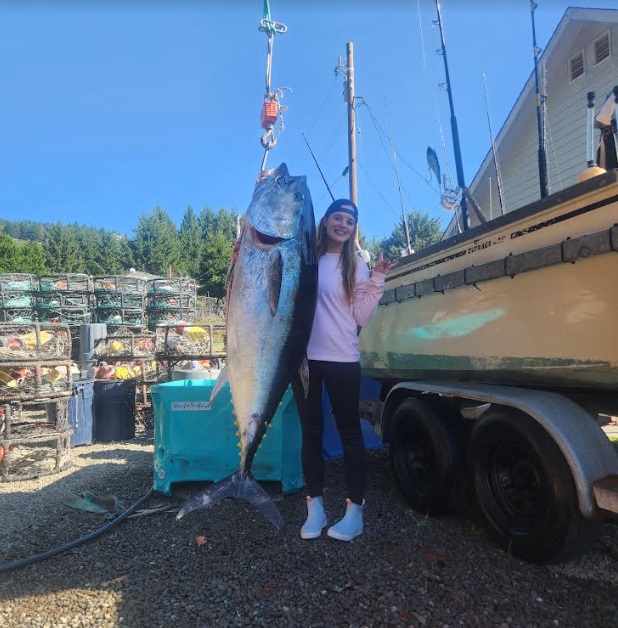
“Erica Herd with her 200 pound Bluefin Tuna recently caught on the “Whaler One” with Captain Johnathan Jeffers and Don Allred”.
Shelter Cove has its own Airport, and a nine-hole golf course where its easy to score a Vole in one. There are nice hotels and air B&Bs to stay overnight/s, and a number of fine dining restaurants to eat at. Shelter Cove has a diverse fishing fleet and offers charters targeting many different species according to seasons and regulations. The town also has a thriving artist community, maybe you’ll fall in love with a painting, wood carving, or jewelry at one of their art galleries. Just don’t miss the unique opportunity to walk with the Whales, the migration is seasonal, spring and fall, but they are sighted year round.






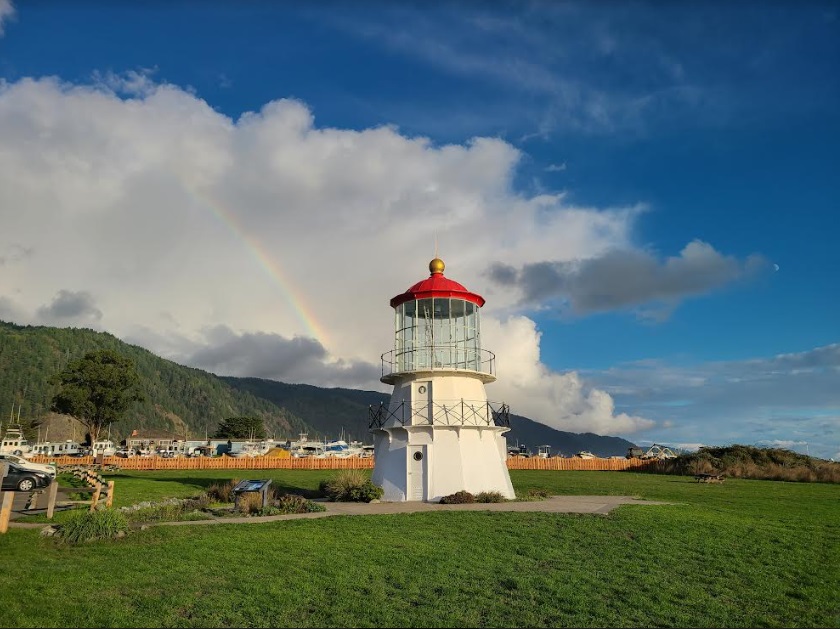
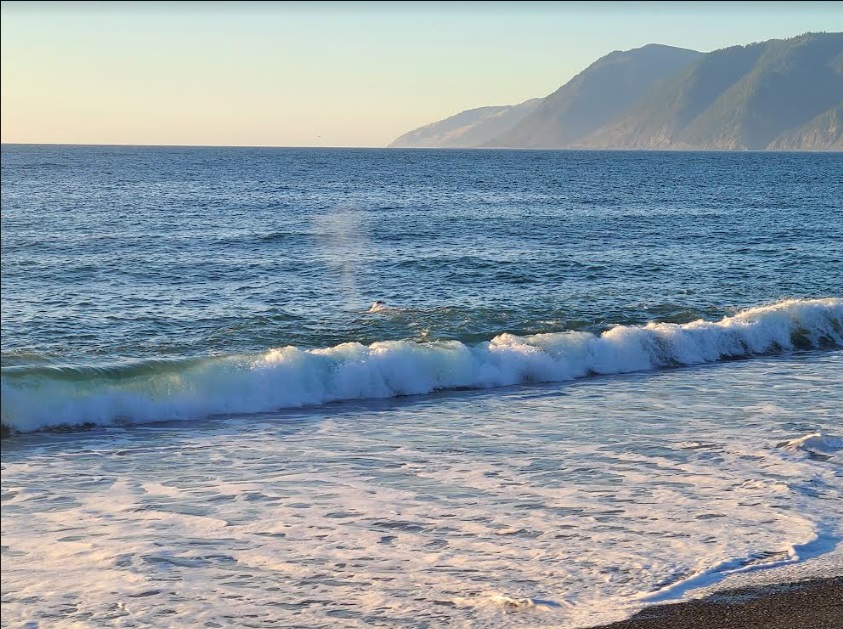
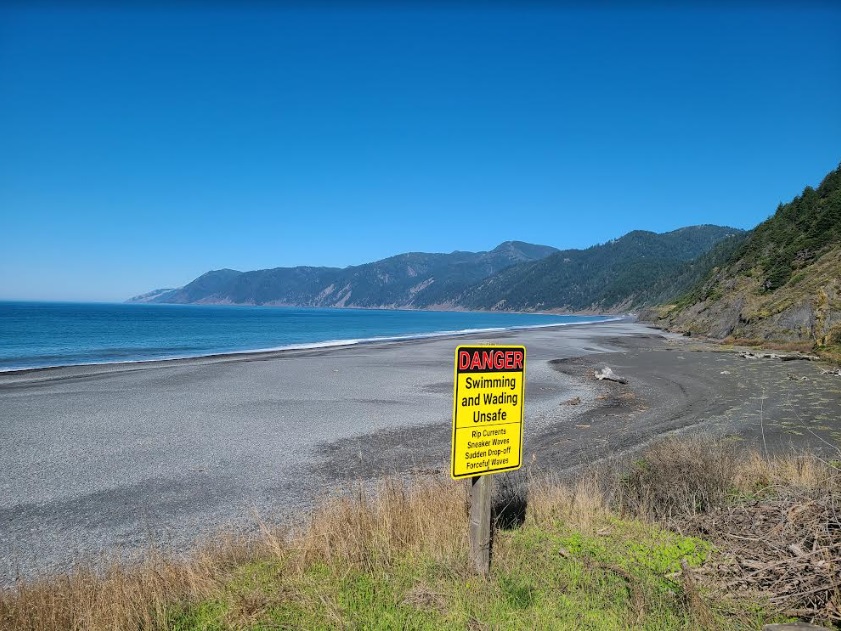
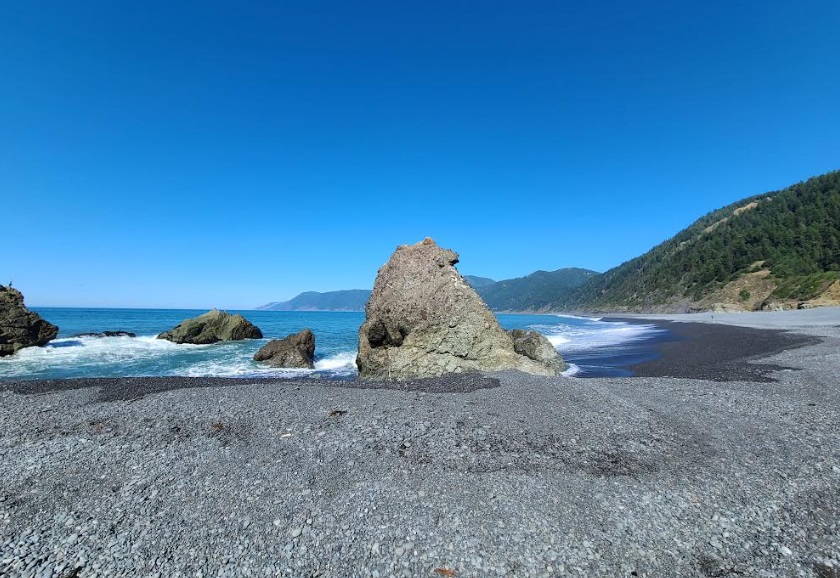
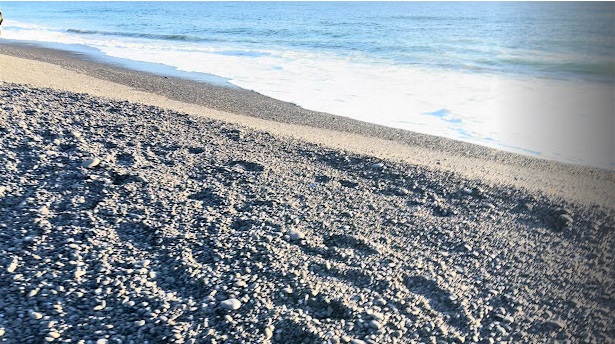



























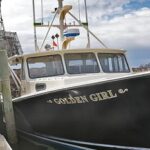
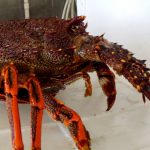

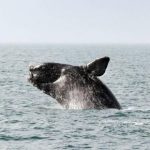






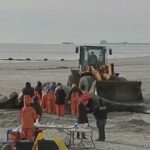
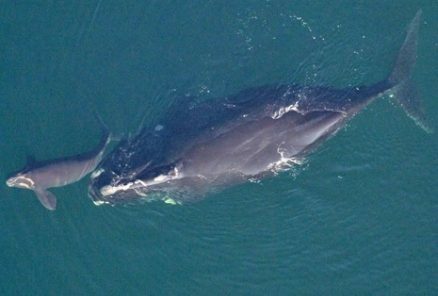
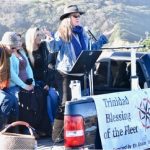
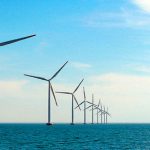




Thank you for this article. I’m a Shelter Cove newbie. This is wonderful information.
Mike, went down at 4 today and sighted one within a few minutes, we followed north for about a half mile before it headed offshore.
Hello Mr. Lovgren this is a personal note I think we could be related if in fact you are related to the late Gosta Lovgren, Gosta was my mothers cousin and his mother Marion was her aunt , I came across your name and just wondered , thankyou for your time , yours truly Eric Crane
Beautiful pictures and story, thanks Jim!
Hi Geordie! The photos are great, as is Jims’s writing. Great descriptions of everything in the area, and he sells the whales, and the community well to potential visitors. Would love to land a nice Bluefin Tuna like Erica Herd!